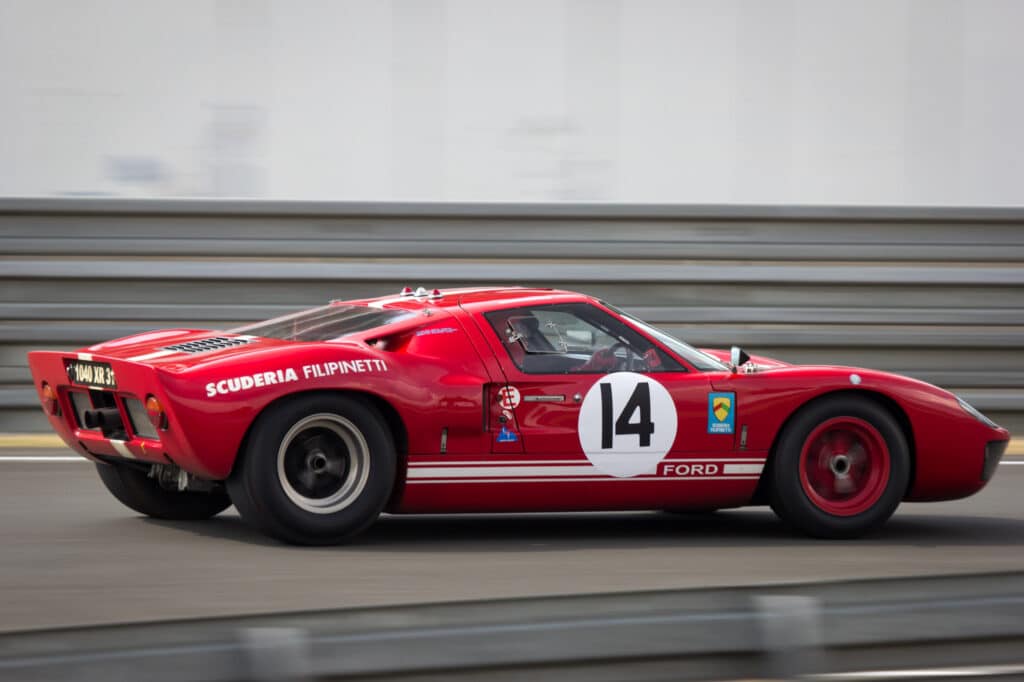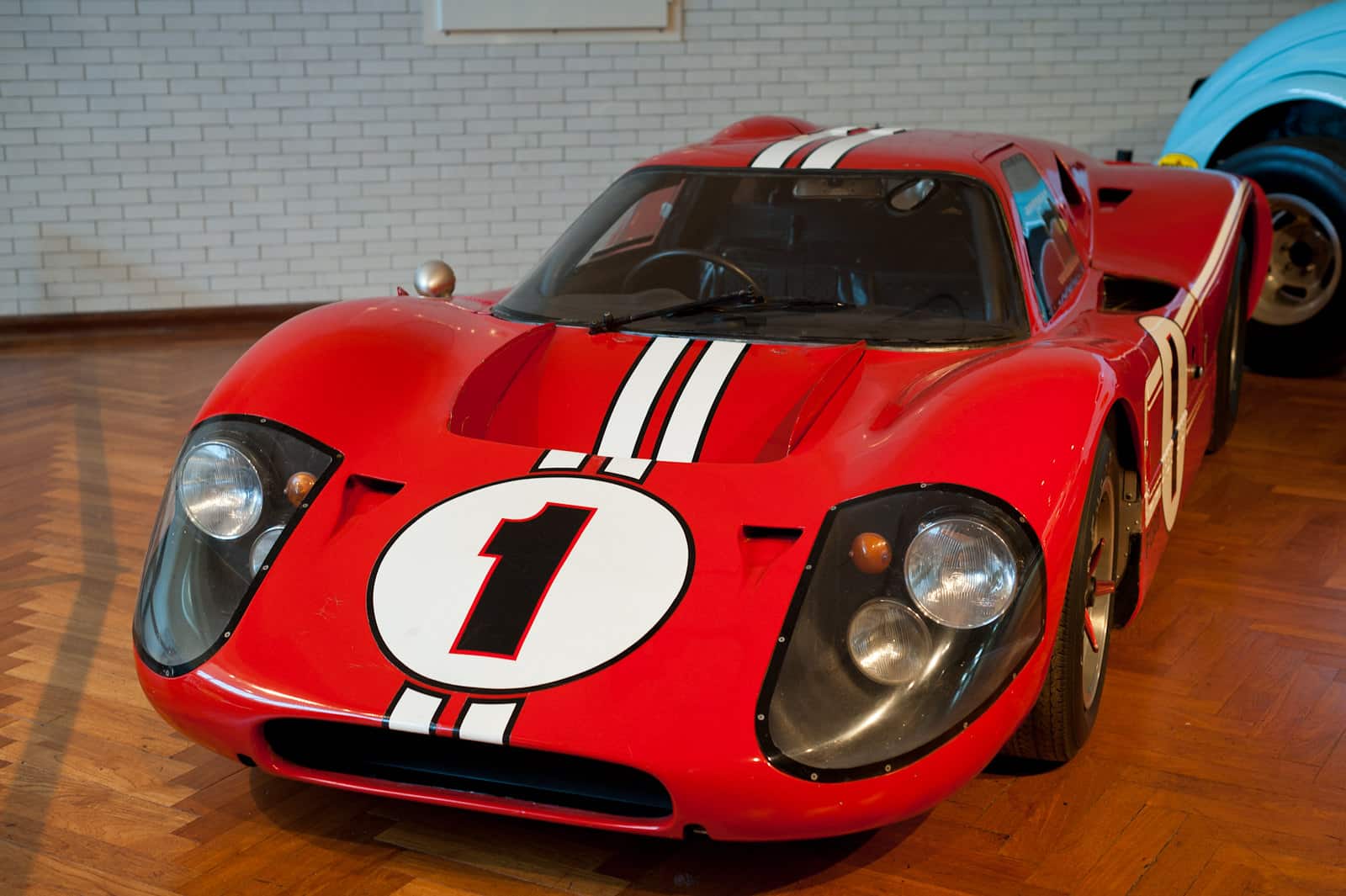The original Ford GT40 is undoubtedly one of the most successful race cars of the 60s. This is the car that, among other victories, won the 24 Hours of LeMans four times in a row. Being so dominant in such a prestigious event and setting many speed records along the way is something that speaks for itself. But probably more fascinating than its results is the fact the GT40 was first made out of pure spike. If it weren’t for a quarrel between two great automotive persons of the 20th century, we probably wouldn’t have it.
Why Ford decided to make the GT40
Back in the early sixties, Ford faced a problem, as the sales of their cars were dropping rapidly. For a good part, this was because these models were just not sporty and exciting enough for young buyers. But instead of revamping their lineup, executives at Ford decided to find and buy a manufacturer that already had highly-desirable cars in their arsenal. And at that time, Ferrari seemed like the perfect pickings. Although their road-car division offered several stunning models, it was also in severe financial difficulties. Initially, Enzo Ferrari was ready to sell this section of its company, and it seemed like the merger would happen. However, il Commendatore insisted on keeping absolute control over the motorsports division, which was rejected by Ford. Because of this detail, which came apparent during the final negotiation, Enzo Ferrari decided the deal was off.
This didn’t go well in Detroit, where Henry Ford II was furious with the sudden and unexpected turn of events. To get even for this insult, he decided that Ford would build a race car that would beat Ferrari. And it would have to do so at the most prestigious event of them all – the 24 Hours of LeMans.
The original Ford GT40
However, turning this ambitious plan into reality would be anything than easy. For a start, Ford, despite its resources and manufacturing capabilities, had never before made a racing car. Furthermore, the new vehicle needed to be completed in less than a year, which is tight even for someone experienced. So, instead of starting from the ground up, Ford paired up with Lola, a British racecar manufacturer successful at such races.

What the newly-founded firm created in just under nine months looked like an engineering masterpiece. The basis of the new car was the chassis Lola had already used in previous years. However, the body was thoroughly redesigned, with improved aerodynamics being the main focus. One of the most striking things was its height, which measured only 40 inches from the ground. Hence the GT40 name. Under the skin, this car had a mid-mounted Ford’s proven 4.7-liter V8 Fairline engine. Still, this unit was extensively modified for a racing application, improving its power output and ability to work under higher loads. And with a race-ready 5-speed manual transmission and a curb weight of only 1800 pounds, the Ford GT40 had all the makings of a future winner. This was on paper, at least, as every race car has to prove itself in real-life racing conditions.
Ford GT40 and its first races
The Ford GT40 debuted in early 1964 at the Nürburgring 1000 km race, where it quickly became apparent that it had the needed speed. But the new car also proved unreliable, as suspension failure forced it to retire while holding an excellent second place. At the 24 Hours of LeMans, Ford showed up with three cars, which either crashed or broke down during the race.

Moreover, these first Ford GT40s were terrifyingly unstable and hard to control at high speeds. And with the following few events ending up with similarly catastrophic results, it was obvious that radical changes were necessary. So, Ford pulled the plug on their Lola-based outfit and moved the whole operation to the United States.
Ford GT40 – the second take
Back in the US, cars were handed out to a former chicken farmer and race driver, Carol Shelby. He and his team had the knowledge and extensive experience to fine-tune the car for the best possible performance. Shelby also insisted they should have a driver that drives fast but also has in-depth automotive knowledge. Back then, with no computers or telemetry, this was the only way for the engineers to find out how the car behaved at the limit. And with the new racing season near, all the tweaks and modifications had to be done fast. Luckily, Carol knew that his long-time friend Ken Miles would be just the right man for the job.
The outing for this redesigned Ford GT40 was in early 1965, at the Daytona 2000 race, where it finally won. It was also impressive on the next event, the Sebring 12-hour race, where it dominated its class. However, the rest of the season was not that impressive, with Ford failing to complete the remaining races, including 24 Hours of LeMans.
The new Ford GT40 MkII
For the 1966 season, Henry Ford made everybody clear that year they must win. Luckily, regulation changes allowed them to replace the old engine with a 7.0-liter monster used in NASCAR racing. Because of its size and weight, the body and mechanical underpinnings had to be redesigned to accommodate the new unit.

The new, second-generation Ford GT40, usually called MkII, was a spot-on car. At the season’s opening, at 24 Hours of Daytona, they claimed all three top podium spots. And then they did the same at the following race, the 1966 12 Hours of Sebring. Finally, by securing the 1-2-3 victory at 24 Hours of LeMans, these perfectly-balanced cars did what they were initially built for.
The ill-fated J-car and the MkIV Ford GT40
During 1966, while actively racing GT40 MkII models, Ford was also developing its successor. This prototype, usually called the J-car, had a lightweight-aluminum chassis and significantly different bodywork. The reworked aerodynamics should have, in theory, made the car more controllable through fast corners. However, this idea came under question after the tragic crash and death of Ken Miles, which happened while testing the new J-car. Consequently, Ford abandoned the unproven and potentially dangerous concept and adopted a more conventional body shape and chassis for their upcoming 1967 racing car.
Still, this compromise didn’t seem to hamper the performance, as these new MkIV Ford GT40s would win that year both at Sebring and LeMans. These were the only significant events these cars took part in, as the regulations for the next year changed one more time. With engine size limited to 5 liters, Ford reverted to the original MkI cars for the 1968 and 69 seasons. And once again, they’ve dominated on Sebring and LeMans, completing Ford’s 4-year winning streak on these racing events.
Other versions
In addition to these race-winning thoroughbreds, Ford GT40 had several other models over the year. Among them, the MkIII is probably the most important. This was a road version, which was never intended for competitive applications. The MkIII Ford GT40 was more spacious and comfortable than racing models, thanks to its softer suspension and a bigger trunk.

Also, several replicas were made on both sides of the Atlantic over the years. This includes vehicles such as the GT40/R Competition, built by Superformance, and kit cars from the British Southern GT manufacturer.
Ford GT40 – today’s value
During its production run between 1964 and 1969, Ford only made 105 GT40 cars. This makes them a rare vehicle, especially when considering that not all of them survived. As a result, Ford GT40 is highly-desirable among collectors and achieves high prices when on sale. For example, one of the three 1966 Le Mans-winning cars was sold in 2018 for almost ten million dollars.
A brief about Ford GT40
The GT40 was a 2-seater racing car built by Ford between 1964 and 1969. With its powerful V8 engine inside a sleek and lightweight body, it had all the makings of a successful racer. This was proven many times, as the Ford GT40 won many races, including the famous 24 Hours of LeMans. And all that was done to prove Ford could make a car that would beat Ferrari on their home territory.





